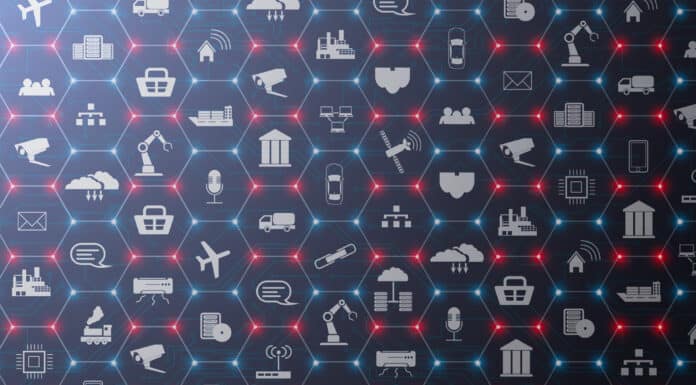Cyber-Kinetic Security
Cyber-Kinetic Security Articles
The Dual Risks of AI Autonomous Robots: Uncontrollable AI Meets Cyber-Kinetic Risks
The automotive industry has revolutionized manufacturing twice.
The first time was in 1913 when Henry Ford introduced a moving assembly line at his Highland Park plant in Michigan. The innovation changed the production process forever, dramatically increasing efficiency, reducing the time it took to build a car, and significantly lowering the cost of the Model T, thereby kickstarting the world’s love affair with cars. The success of this system not only transformed the automotive industry but also had a profound impact on manufacturing worldwide, launching the age of mass production.
The second time was about 50 years later, when General Motors installed Unimate, the world's first industrial robot, on its assembly line at the Inland Fisher Guide Plant, New Jersey. Initially...
Digital Actions, Lethal Consequences: A Cyber-Kinetic Risk Primer
Our physical world is becoming more connected – which makes it more dependent on the cyber world. Many physical objects around us are no longer just physical, but extend into cyberspace, being remotely monitored and controlled.
Consider the power plant or water plant that supplies your electricity and water. These systems have single-purpose computers embedded within each switch or valve. Each computer monitors system conditions and decides whether to open or close that switch or valve to keep the system running optimally.
They monitor and control systems at a level that humans would find too granular and too tedious to warrant their undivided attention. They also send a constant stream of data upward in the system to provide actionable information to...
Saudi Arabia Vision 2030: Cybersecurity at the Core of Transformation
Last week, the Saudi Data and Artificial Intelligence Authority (SDAIA) launched a nationwide awareness campaign called “Ask Before”, intended to educate the public about the significance of personal data ahead of the implementation of a new national personal data protection system.
Emphasizing responsible data handling, privacy preservation, and fostering trust and collaboration between commercial entities and private individuals, “Ask Before” supports KSA’s new Personal Data Protection Law (PDPL), which became enforceable on September 14th.
The need for such a campaign stems from the fact that the PDPL is the first regulation of its kind rolled out in the kingdom, activated five years after Europe’s General Data Protection Regulation (GDPR). The new law is noteworthy, because it is yet further evidence of the accelerating...
Securing Society 5.0 – Overcoming the hidden threats in society’s greatest evolutionary leap
A term first coined by the Japanese government, “Society 5.0” describes "A human-centered society that balances economic advancement with the resolution of social problems by a system that highly integrates cyberspace and physical space." The fifth evolution of the society, enabled by the fifth generation of cellular networking and cyber-physical systems, imagines technology, things and humans converging to address some of the biggest societal challenges. The concept encompasses Industry 4.0, Fourth Industrial Revolution, Smart-Everything World and other buzzwords of the moment.
In the society of the future the more the cyber and physical worlds are combined, the greater the benefits we will experience. However, the same is true of cyber threats. The more technology is incorporated into every corner of...
Cybersecurity and Safety in the 5G-Enabled Smart-Everything World
Neil Harbisson calls himself a cyborg. Without the antenna implanted in his skull, he would not be able to see colour of any kind. Born with achromatopsia, a condition of total colourblindness that affects 1 in every 30 000 people, Harbisson's physical faculties are augmented by cyber technology to grant him access to a life of greater meaning and satisfaction.
As technological evolution leads to concomitant advances in medical science, we are seeing more and more examples of humans who are integrating devices and sensors into their biological makeup. For some, like those part of the growing "transhumanist" movement, this is a means of artistic expression or exploration of human potential. For others, it is a solution to a medical...
The Quantum Computing Threat
The secret sauce of quantum computing, which even Einstein called "spooky," is the ability to generate and manipulate quantum bits of data or qubits. Certain computational tasks can be executed exponentially faster on a quantum processor using qubits, than on a classical computer with 1s and 0s. A qubit can attain a third state of superimposition of 1s and 0s simultaneously, encode data into quantum mechanical properties by "entangling" pairs of qubits, manipulate that data and perform huge complex calculations very quickly.
IIoT and Trust and Convenience: A Potentially Deadly Combination
When microwave ovens first arrived on the market in 1967 they were met with public skepticism. Perhaps it was because, not long before, the same technology now promising to safely cook consumers’ evening meals was the backbone of a military radar. Perhaps it was the $495 price tag (more than $3,700 in today’s money).
Whatever the reason, in the early 1970s the percentage of Americans owning a microwave was tiny. By 2011, it was 97%. What changed?
Trust and convenience.
When microwave technology was first released, it was difficult to trust. Cooking without using heat? It was simply too alien. In 1973, Consumers Union stated that microwave ovens couldn’t be considered safe because there was no solid data on safe levels of...
Most popular articles this week































